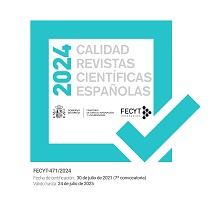Diabetic foot care before and after an educative intervention
Abstract
Knowledge about foot care among diabetes mellitus (DM) patients contributes to avoid future complications. A quasi-experimental study undertaken at health centers in San Luís Potosí, Mexico, aimed at describing the sociodemographic and clinical profile of DM patients and their foot care habits before and after an educative intervention, based on participatory and traditional communication. The study was developed in two groups. The experimental group participated in the foot care education program using participatory communication, while the control group used the traditional communication method. For data collection, interviews were held at three different times: before the start, at the end of the program and six months after the end of the intervention. Most subjects were female, with a mean age of 52 years, had not finished primary education and, besides DM, suffered from arterial hypertension. As regards foot care habits, statistical tests showed a significant difference (p <0.001) between the first and second measure, which may be due to the effect of the course and the better results achieved through the education program that used participatory communication. Thus, it was concluded that the effect of the educative intervention based on participatory communication entailed positive changes in the diabetic patients’ foot care, and also favored learning and the choice of care conductsDownloads
The works published in this magazine are subject to the following terms:
1. The Publications Service of the University of Murcia (the publisher) preserves the copyright of the published works, and encourages and allows the reuse of the works under the license for use stated in point 2.
© Servicio de Publicaciones, Universidad de Murcia, 2011 (© Publications Service, University of Murcia, 2011)
2. The works are published in the electronic edition of the journal under Creative Commons Reconocimiento-NoComercial-SinObraDerivada 3.0 España(texto legal) “ a Attribution-NonCommercial-NoDerivatives 3.0 Spain license (legal text)”. They can be copied, used, broadcasted, transmitted and publicly displayed, provided that: i) the authorship and original source of their publication (journal, publisher and URL) are cited; (ii) are not used for commercial purposes; iii) the existence and specifications of this license is mentioned.
3. Conditions of self-archiving. Authors are allowed and encouraged to electronically disseminate the pre-print (pre-reviewed ) and / or post-print (reviewed and accepted for publication) versions of their works prior to publication, as it ensures a wider circulation and dissemination which may lead to a possible increase in its mention and a higher scope among the academic community. RoMEO color: green.













